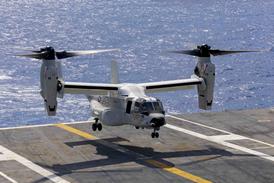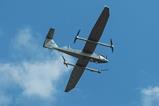The US Air Force (USAF) has a new fighter on display, but not one of the latest offerings from Boeing or Lockheed Martin.
The jet is a Cold War-era Sukhoi Su-27 Flanker that was designed and built in the former Soviet Union.
The National Museum of the USAF revealed the acquisition of the fourth-generation air-superiority fighter on 26 September, posting images of the blue-and-grey-camouflaged jet on social media.
“Here’s a first look at the museum’s recent acquisition of the Sukhoi Su-27,” the museum says on Facebook and X, the site formerly called Twitter. “Plans call for this aircraft to join the Cold War Gallery this fall.”
The photos indicate the jet is a two-seat Su-27UB trainer variant of the Flanker. The Soviet air force used Flanker fighters for interdiction and air superiority missions.
The USAF museum has provided scant details about the Flanker’s origin or how it came to posses the foreign craft. However, the blue paint scheme and numerical designation matches the description of an Su-27 first registered with the Federal Aviation Administration (FAA) in 2009, as reported by the War Zone.
Aircraft registration records show the jet was assigned civil registration number N132SU that same year and was owned by Meridican, an entity that had been based in the US state of Delaware – known for loose rules regarding incorporation.
Meridican’s website describes it as a “strategic advisory and government relations firm” headquartered in Philadelphia. Among its services, Meridican lists expertise in military aeronautics.
“We offer years of experience in the brokerage and acquisition of specialised military hardware, including aircraft,” the company says. “Whether it be single planes or a small air fleet, we can and will find, purchase and deliver the requested aircraft, or other goods, for our clients.”
FAA records show that the civil registration assigned to Meridican for the Su-27 expired in 2018 and has not been renewed.
The aircraft database maintained by hobby website Aerial Visuals also lists an Su-27UB with the same civil registration number and a physical description matching the photos released by the USAF.
That log shows the two-seat Flanker as changing hands at least once since it arrived in the USA in 2009.
Records describe the jet as originating with the Ukrainian air force and being imported by Pride Aircraft, a company formerly based at the Greater Rockford airport in Illinois. Court records indicate Pride filed for bankruptcy in 2020, after which the airport authority sought to evict the firm.
After Pride imported the Flanker in August 2009, it was registered to Meridican in November of that year. A certificate of airworthiness was issued to the company by the FAA in December 2009, then a second was issued for the Su-27 in 2010 to Tactical Air Support of Reno, Nevada. That company provides private adversary air services on contract to military forces.
Tactical Air’s website lists several active contracts with the US Navy and US Marine Corps. The company says it operates 25 Northrop F-5 third-generation supersonic fighters and eight Canadair CF-5Ds.
Tactical Air also says it offers “extensive experience” operating customer-owned aircraft “in support of their training objectives”. The company lists the Su-27 among that list, noting it has flown the Soviet-era jet in “global training operations”.
After the 2010 type certificate with Tactical Air and subsequent registration expiration in 2018, the Su-27’s trail goes cold. It remains unclear how the aircraft made its way into the hands of the USAF, and what the service used it for before relegating the jet as a museum piece.
The National Museum of the USAF did not immediately respond to an inquiry from FlightGlobal.
However, it is highly likely the service made secret use of the Soviet fighter for technological examination and to probe for performance vulnerabilities. In Pentagon-speak, such activities are officially known as foreign material exploitation.
Throughout several decades of the Cold War, the USAF covertly acquired Soviet aircraft, including MiG-17, MiG-21 and MiG-23 fighters, to conduct flight testing and adversary air training under a secret programme designated Constant Peg.























































